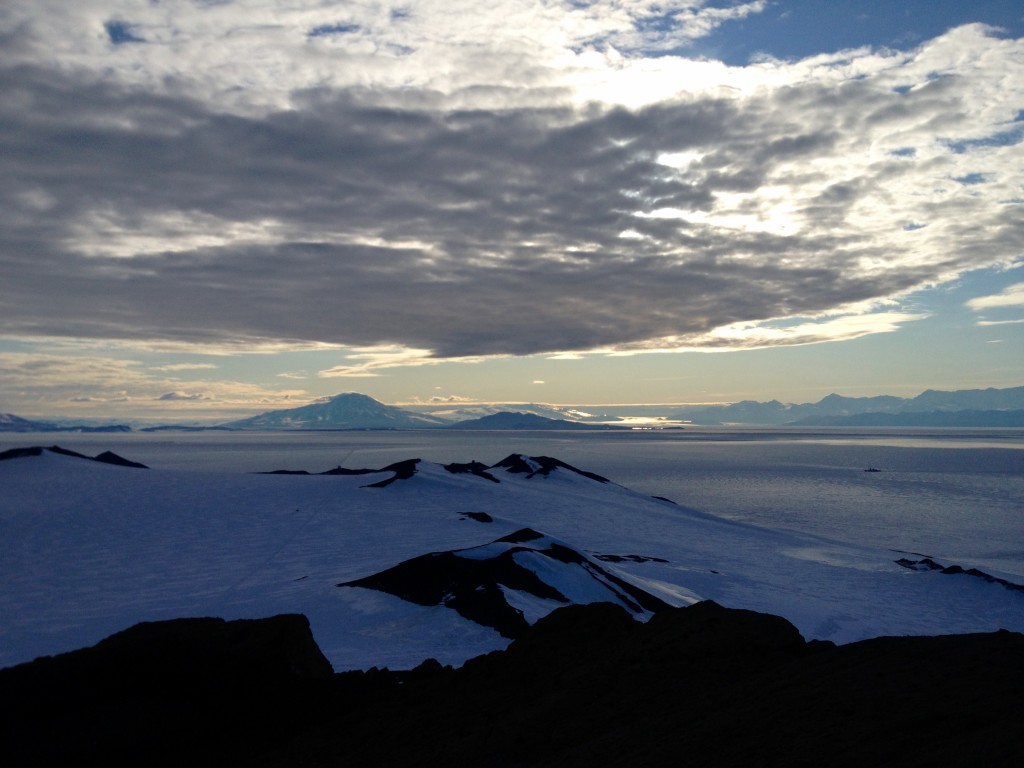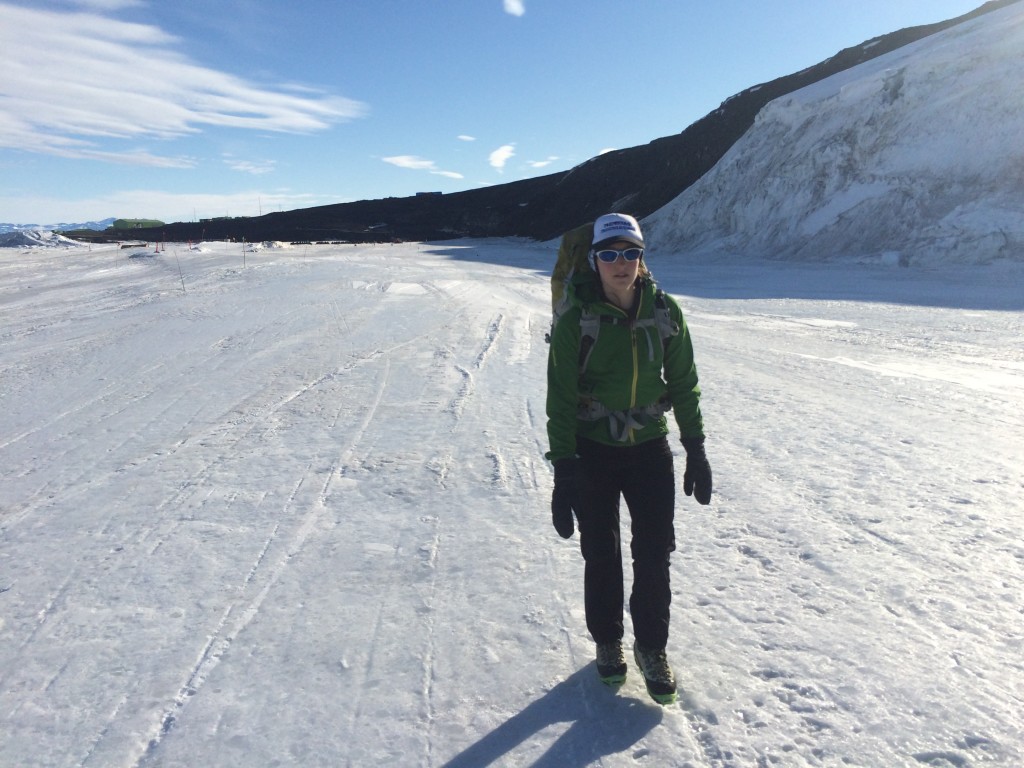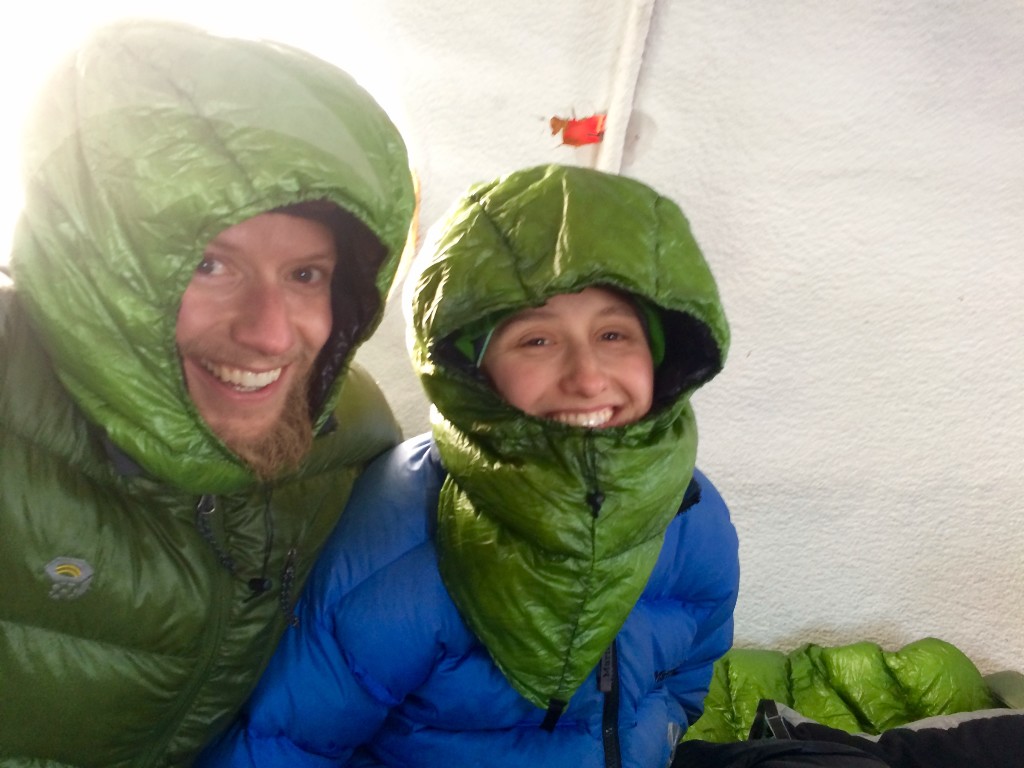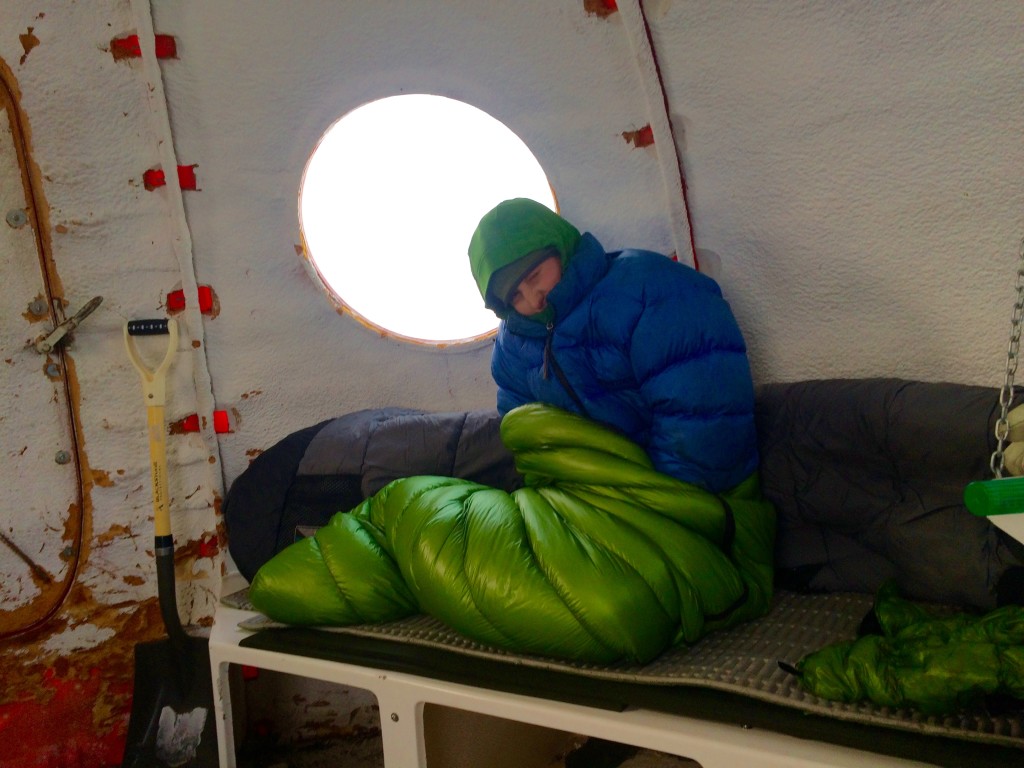Since Richard was not on call this week, we decided to try for a goal we’ve had for a while: sleeping in one of the emergency shelters along the Castle Rock Loop.
Technically, you are not supposed to plan on using the shelters for recreational sleeping, but you are allowed to check out with the firehouse for 12 hours at any time of day. The rule is likely based on the fact that, if allowed, people would drag copious amounts of alcohol out to the first apple, or emergency shelter — they’re shaped like large, apple halves on the snow, and get drunk, stay out past their check-in time and require some sort of elaborate rescue when they’re really just irresponsible, not hurt.
Regardless, we made a plan, packed zero alcohol, checked out with the firehouse and started our hike.
We walked over to Scott Base and the sea ice transition first. Our plan was to do the Castle Rock Loop counter clockwise. While it felt like travel was slow, the weather was amazing. It was clear skies and, again, like the Room with a View trip, there was very little wind. (We really lucked out on our weather window because just hours after we got back to base, poor weather moved in and we lived in a fog for 48 hours.)
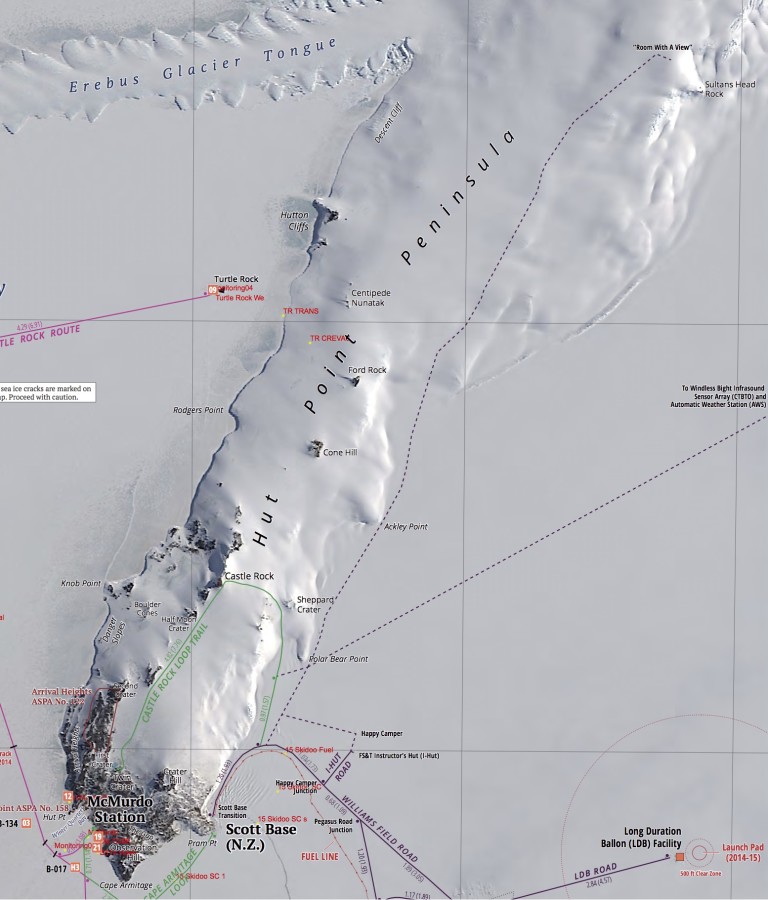
The first leg up the the Kiwi Apple was on soft snow that was also icy. It’s hard to describe. In some places we were sliding around and were forced to pulled traction devices over our boots. Then, we would break through the ice and sink into the snow. It was strange hiking and hard work, but we made progress.
After moving past the Kiwi apple came the big uphill. We had to gain the ridge where Castle Rock sits and move from sea ice to the Hut Ridge Peninsula. This was slow moving from the incline, but eventually we made it.
The weirdest part of the hike was up on the ridge. It was windless and quiet. Antarctica seems like a noiseless place because the wind usually drowns out whatever sounds the ecosystem makes: the seals, skuas, rockfall, even the crunch of your own feet on rock or snow have no voice because the wind overpowers them.
But up on the ridge I could hear squawking skuas, rocks tumbling down scree fields, my own footfall. It was like being in a brand new place.
We were making good progress overall by the time we reached Castle Rock. It was slightly windy higher up on the ridge, but nothing treacherous, just normally breezy.
The view from Castle Rock was lovely. There was a soft, evening light over the glaciers across the McMurdo Sound. They glowed yellow. We could see the Polar Star icebreaker making its way around the ice, getting ready to dock in a couple of days.
Because we started on our hike at 8 p.m. and it was nearly 11 p.m. by the time we summitted Castle Rock, we were getting sleepy. There are two emergency shelters on the Castle Rock Loop that are maintained by the mountaineers at McMurdo. The one nearest Castle Rock is larger, but usually has a floor of ice that forms when snow blows in through cracks and freezes to the floor and walls.
We stuck our heads into the shelter, known as the Second Apple in McMurdo vernacular, but it was still icy, so we kept going toward the First Apple.
This hiking was fairly flat and took us past the seismology calibration unit where our friend Phil works.
It took less than an hour to get to the First Apple from Castle Rock, but I was sleepy and ready to get into dry clothes. I had been nice and warm during the hike, but knew I would cool down fast once we stopped moving.
The first Apple, unfortunately, had grown some ice by the door. Richard spent a few minutes removing it with a shovel while I ate cookies. Then we spread out our sleeping pads and bags on the two benches and changed into dry clothes. I ended up putting on all my dry layers and all my down layers.
Once I laid down, I was quickly asleep.
At some point during the night, I thought I heard voices outside the Apple. Because we weren’t supposed to be sleeping there, there was always the risk that we might get caught by other hikers who were passing by. The voices didn’t last long, and Richard wasn’t reacting, so I went back to sleep.
In the morning, Richard told me it was all coming from the radio we were required to bring. It was relaying conversations between the Firehouse Dispatch and other people on Channel 5. Richard said it happened all throughout the night, but I only heard one exchange.
We set the alarm for 6 a.m. thinking it would give us an hour to convince our bodies to leave our sleeping bags and another hour to make it back to base before our 12-hour checkout was up and they called out the rescue reinforcements. (At the Outdoor Safety Lecture required for anyone who wants to leave McMurdo for recreational trips, they emphasized the importance of checking back in after trips or calling in to extend your time. If the check-in time is passed without word from the group, things immediately start moving to rescue you. For example, within five minutes past the check-in time, all the higher ups on base know you’re gone. Within 30 minutes, teams have already left McMurdo to come look for you.)
That didn’t happen with us. We were up and hiking back before 7 a.m. and back on base before 8 a.m.
The clouds were already moving in while we covered the last couple of miles and we congratulated ourselves on a wonderful weather window. After we got back to our building, we grabbed pizza from the galley and went upstairs to sleep a few more hours.

